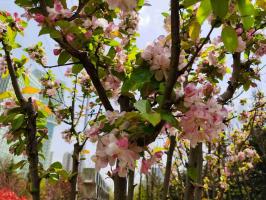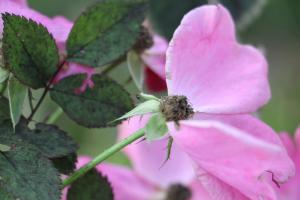Introduction
The brown tree snake (Boiga irregularis) is an invasive species that has caused significant ecological and economic damage to the island of Guam. As a top predator, the brown tree snake preys on a variety of small animals, which has caused declines in native bird, lizard, and bat populations. However, the impact of the brown tree snake on plants is less well-known. In this article, we will explore how the brown tree snake affects plants in Guam.
Brown Tree Snake and Seed Dispersal
One potential way that the brown tree snake could affect plants is through its impact on seed dispersal. Many animals, including birds and rodents, help disperse the seeds of plants by consuming the fruit and dispersing the seeds through their feces. However, the brown tree snake is not a seed disperser. Instead, it consumes animals that are seed dispersers, which could theoretically reduce the number of seeds that are dispersed and impact the growth of certain plant species.
Brown Tree Snake and Pollination
Another potential impact of the brown tree snake on plants is through its effect on pollinators. Pollination is essential for many plant species, allowing them to reproduce and produce fruit. However, the brown tree snake preys on bats, which are important pollinators for many plant species in Guam. By reducing the bat population, the brown tree snake could indirectly impact the reproductive success of certain plant species.
Brown Tree Snake and Habitat Alteration
The brown tree snake has also been implicated in habitat alteration, which could impact plant communities. The snake is known to climb trees and shrubs, which could damage vegetation as it searches for prey. Additionally, the snake's presence may alter the behavior of other animals, creating a cascade of ecological effects that ultimately impact the composition of plant communities.
Case Study: Coconut Trees in Guam
One specific example of the brown tree snake's impact on plants in Guam is its effect on coconut trees. Coconut trees are an important cultural and economic resource in Guam, with the coconut industry generating millions of dollars in annual revenue. However, the brown tree snake preys on rats, which are an important seed disperser for coconut trees. By reducing the number of rats, the brown tree snake could impact the growth and reproduction of coconut trees in Guam.
Conclusion
In conclusion, while the brown tree snake's impact on animal populations in Guam is well-known, its impact on plant communities is less understood. However, research suggests that the snake could indirectly impact plant growth and reproduction by altering the behavior of pollinators and seed dispersers, as well as by damaging vegetation through its climbing behavior. Further research is needed to fully understand the impact of the brown tree snake on plants in Guam.

 how many times do yo...
how many times do yo... how many planted tre...
how many planted tre... how many pine trees ...
how many pine trees ... how many pecan trees...
how many pecan trees... how many plants comp...
how many plants comp... how many plants can ...
how many plants can ... how many plants and ...
how many plants and ... how many pepper plan...
how many pepper plan...
































